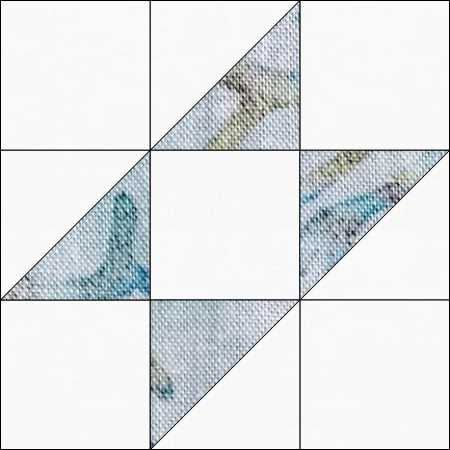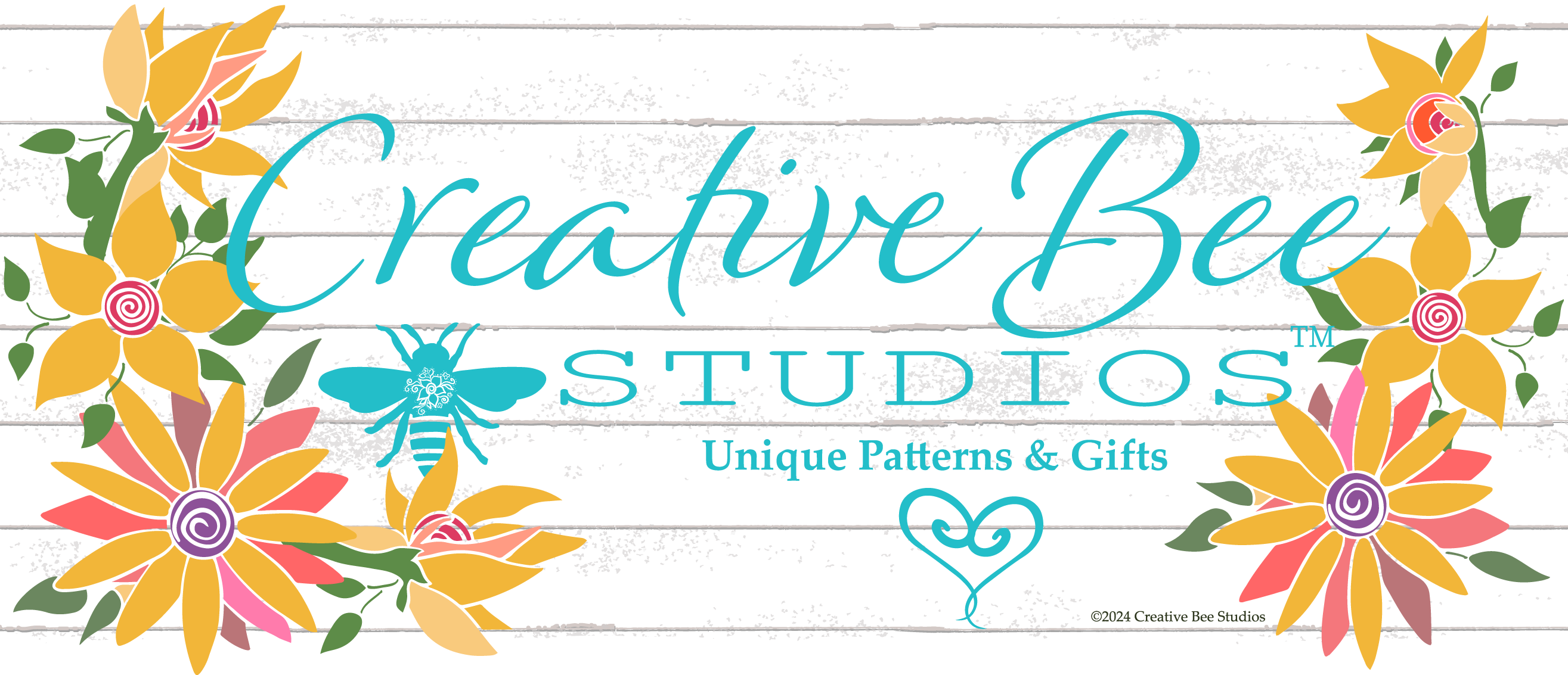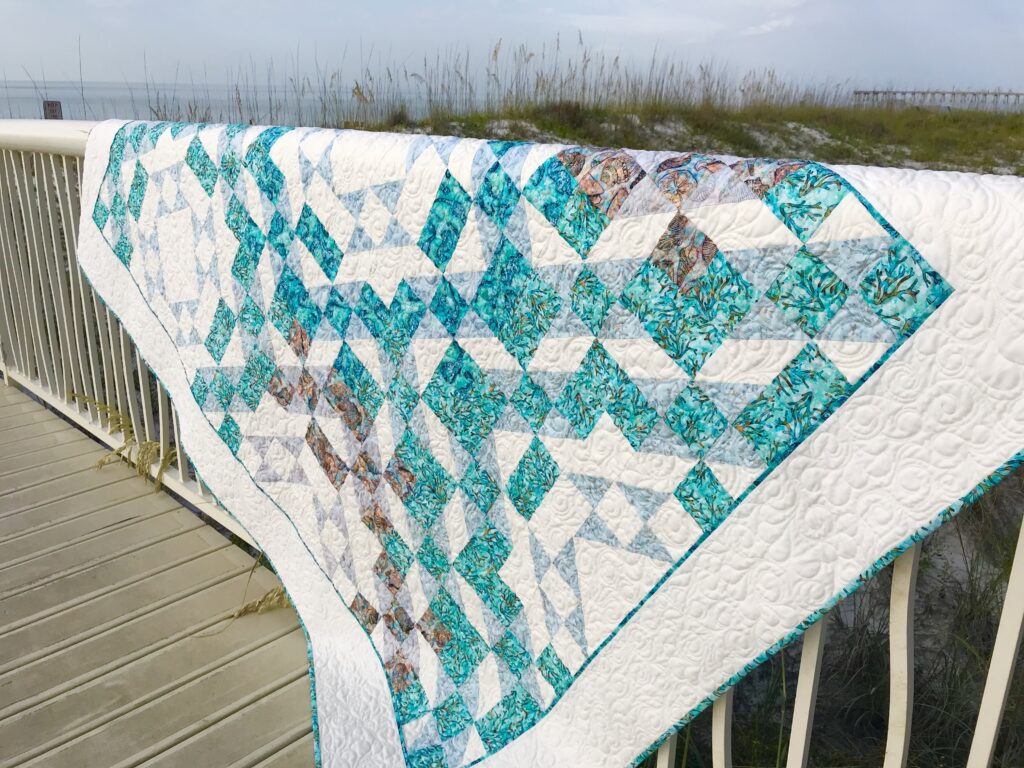Table of contents
- Both sides of each of the printed fabrics need auditioning.
- The lighting plays a role.
- The space you have for testing fabrics makes a difference.
- You can crop your photo, if needed.
- You can adjust for less-than-optimal lighting.
- Finally, to do your color value test, change your photo to black and white!
- After auditioning the printed fabrics with the color value test, audition them WITH your background fabric.
- Auditioning fabrics with this color value test is SO easy! It makes choosing fabrics FUN.
Estimated reading time: 5 minutes
Do you want to know the easiest (yet most dependable) way to do a color value test for BOTH sides of fabric? You’re in the right place!
Let’s use the quilt above as an example. It’s call Treasures. This quilt is made with both sides of three fabrics with a soft white background fabric. Let’s pretend your are choosing fabrics for this quilt.
Both sides of each of the printed fabrics need auditioning.
However, not only will you audition both sides of each fabric with itself. You also need to test both sides of each fabric with each other and with your background fabric. Of course, this isn’t difficult. But some methods for a color value test are better than others. Here’s why.
The lighting plays a role.
The lighting conditions where you find the best fabric may be less than fantastical or even realistic. Inside lighting can drastically change the way a fabric looks. However, few fabric shops would be thrilled about us taking their fabric for an outing into natural sunlight.

The space you have for testing fabrics makes a difference.
For instance, with some methods you need distance from your fabrics and they need to be hanging vertically on a design wall. Another alternative may be to use a ladder to get high enough so that you can look down to view them on a table or floor. This could be a bit awkward.

Therefore, while the methods of using a “testing block”, a door “peep hole”, or simply squinting your eyes may work well enough in your home, they aren’t reliable or easy methods to use when you are shopping for fabrics at your local quilt shop.
Perhaps you want to just take a chance, buy the fabric, and test it at home…I’m just gonna say, “Noooooo!” I’ve tested hundreds of fabric values and I still get stumped sometimes! You can quote me on this:
Colors can be tricky, but VALUE tells the truth.
Karla Kiefner
(My workshop students know.)
What’s a quilter to do?
Pull out your phone. You likely keep it with you anyway. It’s your best tool for the color value test. Here’s why:
Limited space is okay when you use your phone camera.
Simply open your optional bolt of fabric enough to turn a neat corner down, revealing both sides of the fabric. Lay it flat on top of the display of bolts in front of you or on a nearby cutting table. Hold your phone above the bolt, centering and leveling it as best you can, extending your arm as high as possible. Now reach up with your other hand (or use your thumb if you are real good at this) to tap the button, taking a picture. Indeed, it make take a time or two to get a level photo, but you’ll soon get the hang of it.
You can crop your photo, if needed.
While it’s not totally necessary, I prefer to crop distractions out of my photos so that I’m not seeing my feet or surrounding fabrics. To do so, use the edit tool that appears when you are looking at your individual photo.
You can adjust for less-than-optimal lighting.
Next, take a look at your photo to see if the colors look similar to what your eyes see in real life. If not, use the edit function again to make the photo closer to what you see. It doesn’t have to be perfect. Each phone camera is different, so you’ll soon learn if you need to lighten your photos or change with coloring, or use your photo as is.

Finally, to do your color value test, change your photo to black and white!
You might have a setting called noir or mono. Choose either of these to remove the color from your photo. Now look at your fabric. For this quilt, you need there to be a significant difference between the RIGHT and the REVERSE sides. Unlike one of the applique patterns, you don’t need to test each element (like flowers) with other elements (like a vase) in your quilt. There simply needs to be a good contrast.
After auditioning the printed fabrics with the color value test, audition them WITH your background fabric.
Oftentimes, when you find a line of fabrics with beautiful REVERSE sides and the contrast you need, you can make quick work of choosing which ones you want in your quilt because the contrast is similar in them all. The three I used in my Treasures were like that.
Lastly, make sure your REVERSE is still a darker value than your background fabric. That’s usually quite easy. Exceptions to that may be if you are usually a digitally printed fabric with an unusually light REVERSE.

